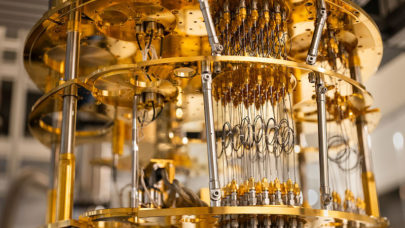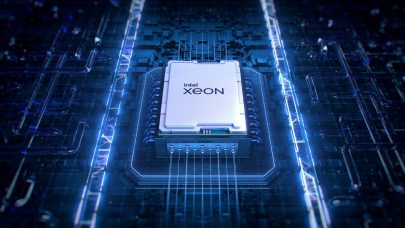The dominance of the x86 in desktop machines, servers, and supercomputers will soon be challenged by the ARM microprocessor. That according Tudor Brown, ARM Holdings’ president and co-founder, who this week took a few shots at the x86 dynasty. Brown’s comments and recent events suggest future ARM-based processors could form a credible threat to high-end CPUs made by AMD and Intel.
Brown’s comments this week, which appear in a MarketWatch report, reiterate the company’s plans to design higher end microprocessors aimed at the desktop and server market, the current stronghold of the x86. According to the him, ARM’s superior energy efficiency is now especially sought after in the datacenter.
From the MarketWatch article: “ARM continues to develop efficient products in terms of power consumption and performance that’s very good for the mobile space,” said Brown. “Those same credentials are appropriate for as we move to servers and high-performance computing.”
ARM is a huge player in the mobile computing space, and is especially well entrenched in the fast-growing tablet market, where the architecture enjoys a 95 percent share. When total shipments are considered, ARM outruns x86 by about a 10-to-1 margin. In 2010, more than 6 billion ARM-based processors were sold, and that number is projected to grow to 8 or 9 billion over the next three years.
Volume is critical since it drives down chip costs and attracts software providers, who, for obvious reasons, prefer to sell their wares on the most widely deployed architectures. In fact, it was the economics of volume that allowed the x86 to attack the server and HPC market from below, displacing higher-end RISC offerings, not to mention Intel’s home-grown Itanium CPU.
Berkeley computer science professor and RISC pioneer Dave Patterson thinks RISC is due for a comeback though. In a recent blog posted on the ARM Holdings website, Patterson argues that the “PostPC” era will see a return to the simpler, more efficient designs of RISC architectures:
“The importance of maintaining the sequential programming model combined with the increasingly abundant number of transistors from Moore’s Law led, in my view, to wretched excess in computer design.” he writes. “Measured by performance per transistor or by performance per watt, the designs of the late 1990s and early 2000s were some of the least efficient microprocessors ever built. This lavishness was acceptable for PCs, where binary compatibility was paramount and cost and battery life were less important, but performance was delivered more by brute force than by elegance.”
It’s not just about shipment volumes and computational efficiency though. ARM has a very different business model than the x86 vendors — one that allows a lot more players into the game. Unlike Intel and AMD, ARM Holdings licenses its microprocessor designs to other vendors, who build the actual processors or devices and pay royalties to ARM in addition to licensing fees. Although Intel Corporation dwarfs ARM Holdings in employee count and revenue, if you include the 200-odd companies that build products with ARM intellectual property, the situation is reversed.
Currently, ARM processors lack a foothold on the desktop and server. But the company’s next-generation Cortex-A15 chip is certainly a step in that direction. Although still essentially a 32-bit design, the A15 adds double-precision floating point support, a 128-bit SIMD engine (NEON), a 1 TB address reach, ECC on cache, virtualization support, as well as much better performance than the current Cortex-A9 generation. The design allows for a 4-way SMP cache-coherent processor, with the possibility for up to 8 cores (or perhaps even 16 cores) to be supported using the CoreLink CCI-400 interconnect. The first A15 products are expected to be delivered sometime in 2012.

ARM is targeting the A15 architecture to everything from smartphones and tablets to network routers and low-power servers. Energy efficiency is the big selling point here. In ultra-scale datacenters aimed at Web search, social media, media serving, and essentially any throughput-intensive application, energy usage is a critical cost. For the same reason, high performance computing facilities are also energy constrained, encouraging HPC users and vendors to search for lower power alternatives to the x86.
The initial chipmaker to latch onto ARM for high-end computing is NVIDIA, who announced its intentions to marry future ARM CPUs with “Maxwell” generation GPU cores on the same chip. Those parts are slated to end up in desktops, servers, and supercomputers, and compete head-on with x86-based offerings from Intel and AMD. At this point, it’s not clear if NVIDIA intends to use the A15 as the basis for its first CPU-GPU processors or wait for a full 64-bit capable ARM architecture, which at this point is still under wraps.
Although NVIDIA is the first vendor to reveal its plans to build ARM-flavored chips for the server market, there’s nothing to prevent other vendors from following suit. It’s not unreasonable to imagine firms like Texas Instruments or Samsung making ARM server parts for this lower volume (but higher margin) market. Because of the open licensing model, an ARM-based server business could provide a much greater diversity of offerings than would be possible from the current x86 duopoly.
In HPC, companies that want to stake out a niche with custom FP accelerators (think ClearSpeed-like vendors) might consider an ARM-SIMD hybrid chip analogous to NVIDIA’s ARM-GPU processor. SiCortex-like companies could design ultra-low power HPC machines by tweaking the ARM design for their own purposes, or even second-sourcing existing ARM server chips. Since manycore programming frameworks like the open standard OpenCL (and the closed standard CUDA) are now available, these same companies can offer software stacks that leverage the growing software base built on top of these APIs.
Of course, AMD and Intel are not about to let ARM’s expansion go unchallenged. In fact as ARM prepares to move up the food chain into x86 markets, AMD and Intel are moving into the low-power space, with Bobcat and Atom, respectively. Especially as smartphones and tablets eat into the desktop/laptop space, the x86 makers are following their customers’ demands.
Intel, in particular, with its x86-compatible Atom processors built for low-power mobile computing, already has an architecture that is at least as capable as the current crop of ARM processors in performance, although not quite as impressive in the energy efficiency department. But given Intel’s considerable R&D heft and superior chip manufacturing capability, the company has a decent chance of taking the battle to ARM at the low end as well as defending its high-end territory.
ARM’s largest weakness in the desktop and server space is software. Although Microsoft just announced it will support ARM on Windows 8, the architecture has a big stack of software to swallow before it can reach parity with x86, especially in the server arena. None of this is insurmountable for ARM proponents, and we may be at a point where the business model of chip making and shifting customer demands now favor the little guys.
On the other hand, Intel and AMD have been pushing past their RISC challengers for nearly three decades, from the PowerPC to Sparc. Over the next few years we’ll see if the x86 juggernaut has run out of steam or if it can prevail at least one more time.


























































